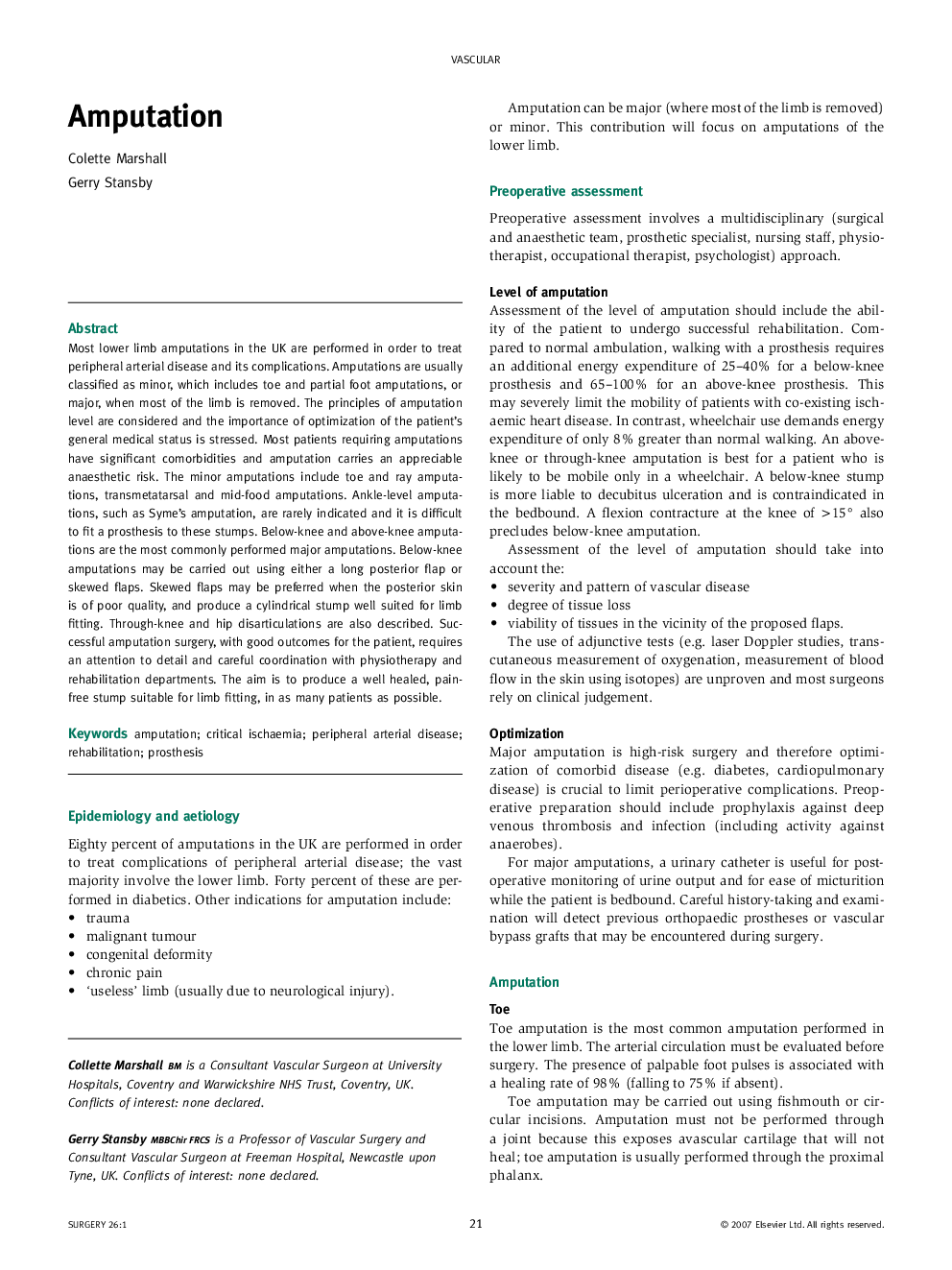| کد مقاله | کد نشریه | سال انتشار | مقاله انگلیسی | نسخه تمام متن |
|---|---|---|---|---|
| 3839953 | 1247840 | 2008 | 4 صفحه PDF | دانلود رایگان |

Most lower limb amputations in the UK are performed in order to treat peripheral arterial disease and its complications. Amputations are usually classified as minor, which includes toe and partial foot amputations, or major, when most of the limb is removed. The principles of amputation level are considered and the importance of optimization of the patient’s general medical status is stressed. Most patients requiring amputations have significant comorbidities and amputation carries an appreciable anaesthetic risk. The minor amputations include toe and ray amputations, transmetatarsal and mid-food amputations. Ankle-level amputations, such as Syme’s amputation, are rarely indicated and it is difficult to fit a prosthesis to these stumps. Below-knee and above-knee amputations are the most commonly performed major amputations. Below-knee amputations may be carried out using either a long posterior flap or skewed flaps. Skewed flaps may be preferred when the posterior skin is of poor quality, and produce a cylindrical stump well suited for limb fitting. Through-knee and hip disarticulations are also described. Successful amputation surgery, with good outcomes for the patient, requires an attention to detail and careful coordination with physiotherapy and rehabilitation departments. The aim is to produce a well healed, pain-free stump suitable for limb fitting, in as many patients as possible.
Journal: Surgery (Oxford) - Volume 26, Issue 1, January 2008, Pages 21–24